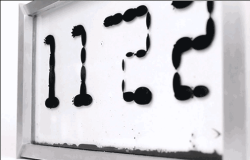Go into a fancy drug store, and you might just find one of the most amazing sales demonstrations you’ll ever see. Step right up, take your shoes off, and place your feet onto the magical Dr. Scholl’s machine, and you’ll get a customized readout of how your feet touch the ground. As an added bonus, you’ll also get a recommendation for a shoe insert that will make your feet feel better and your shoes fit better.
There is, of course, one problem with this setup. You don’t stand on a footprint measuring device all day. A better solution to the problem of measuring how your feet hit the ground is doing it while you walk. That’s where [chiprobot]’s Alli-Gait-Or Analysis comes in. It’s that Dr. Scholl’s machine tucked into the sole of a shoe. It can be worn while you walk, and it can tell you exactly how your feet work.
[chiprobot]’s robotic shoes consist of a 3D printed insert that holds eighteen piezo transducers per shoe. These are connected to ADCs, which feed into a microcontroller which sends the data out to a computer. That’s simple enough, but making sense of the data is the real problem.
To turn this data into something that could be used for selecting orthotics or simply finding a better shoe, [chiprobot] is plugging this data into Blender and creating some very cool visualizations. It’s good enough to get some serious data off a shoe, and since this Alli-Gait-Or is wearable, the data is much more valid than a machine sitting in a drug store.























